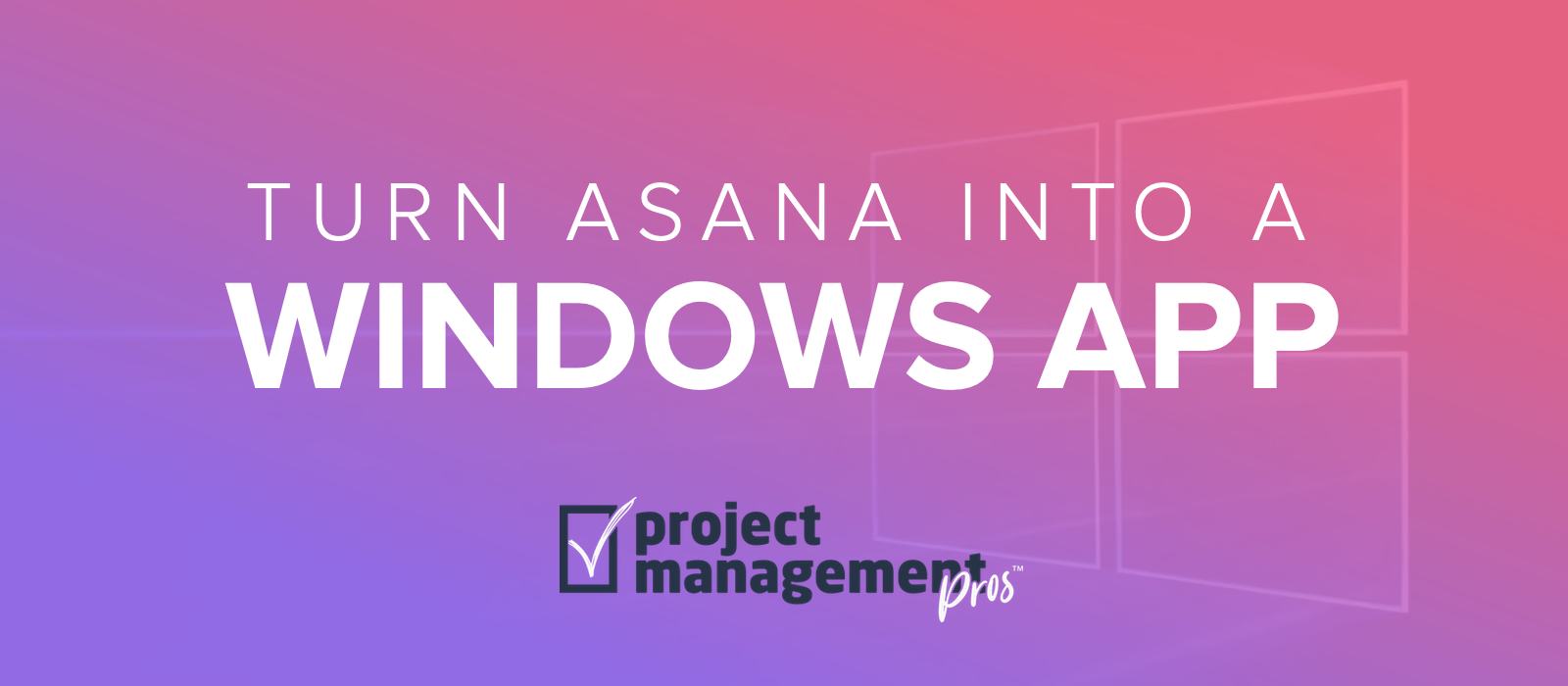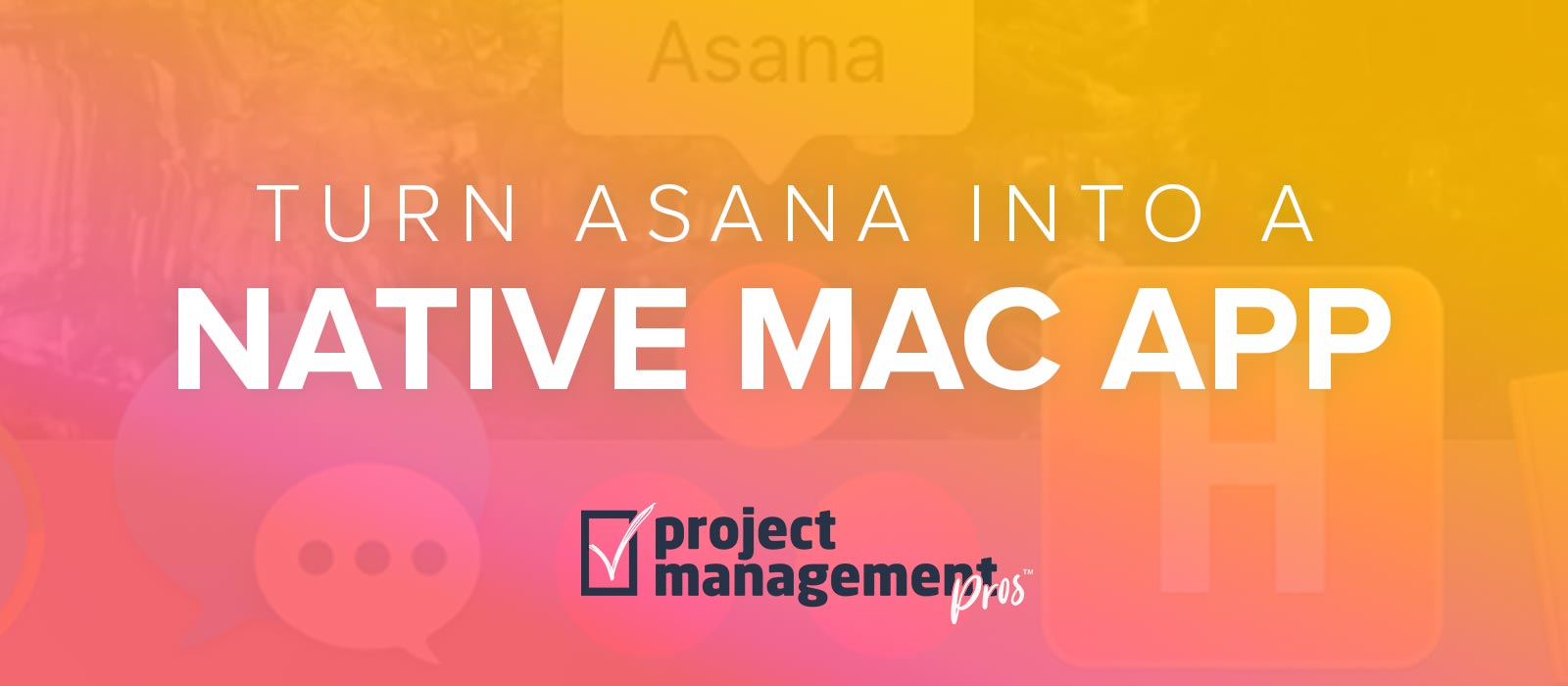The “Future of Asana” recap
Note: If you buy something linked to in one of our posts, we may get a small share of the sale.
Asana, Inc. recently premiered a 23-minute presentation giving an “exclusive look at our multi-year product vision and the future of work with Asana.” Some parts were exciting, some maybe overly ambitious, and others…(cue the inspirational music!)…a little self-absorbed and straight out of HBO’s Silicon Valley.
So here’s the Project Management Pros unbiased recap.

Overall impressions: “I’ll believe it when I see it”
In general, the presentation felt more like a hopeful look at what Asana could be rather than the concrete steps Asana is taking to make work better for everyone. If you buy in to their vision, it’s very exciting.
But if you’re skeptical of their ability to execute on their vision, you may be left believing, “If you can’t fix the $%@&# subtasks so they show on calendars, why am I going to trust you to invent an ‘artificial intelligence to create a tailored meeting agenda’?”
And you may have reason to be a little skeptical. In March 2018, Asana also laid out their plans for the future. In that video, they discussed new features like:
- A focus mode that helps you only see what’s important for the day and automatically launches relevant apps on your computer. Not even a hint of this.
- “Our algorithms that can understand her, her colleagues, and her company’s full intentions.” Um, that’s a hard no.
- Learning what time of day you work best on which tasks to curate the most useful things you can do right now. Not at all.
- Use algorithms to intelligently allocate tasks to everyone on the team, taking into account vacation schedules and variations on employees’ skills and speed. Most companies can barely use the Workload view because of the difficulty of working with Portfolios. There’s certainly been no attempt at automatically allocating tasks.
- Automatically coordinate and schedule meetings based on attendees’ calendars. Nope.
- Attach automatic meeting transcripts to the task at hand. Nada.
- “Asana uses intelligent algorithms, along with its detailed knowledge of the status of everyone’s work, to provide that director automatically with a heatmap of what’s on-track and what needs attention.” In reality, portfolios require essentially 100% manual effort to maintain.
- Pull data from various data sources to show progress towards key results. Didn’t happen.
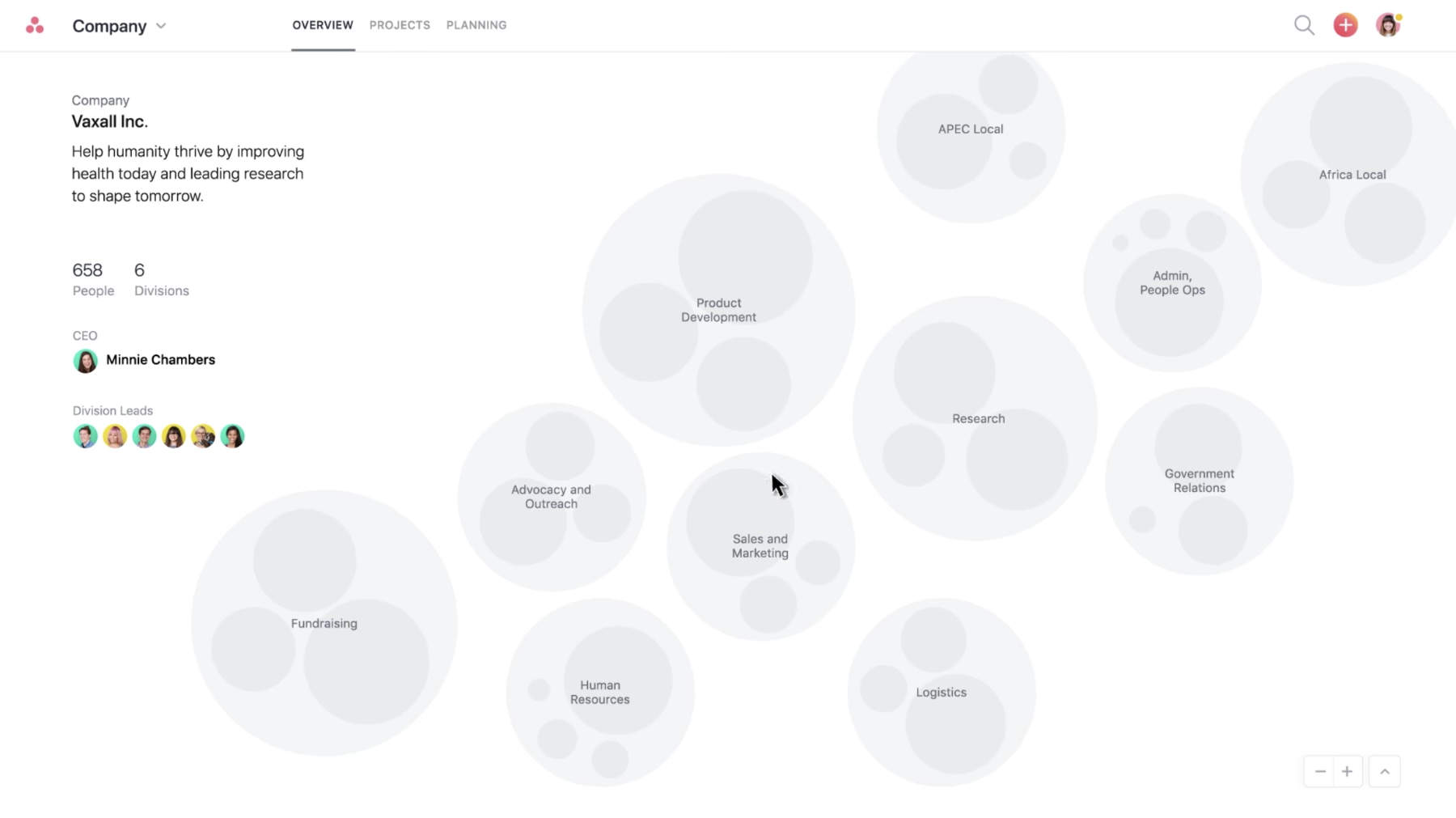
However, we’re big fans of Asana and as project management nerds, we want to believe at least some of this will come to fruition. Here are some of the neat features Asana aspires to roll out in the future.
Automatic tasks aggregation from various tools
“Asana aggregates all of Joan’s tasks from all the tools she uses every day and presents her with a single clear list. The prioritization of this list is based on an algorithm that takes into consideration organization goals, team timelines, and individual objectives.”
Analysis
Asana really stressed in the presentation the desire to be a work “hub” that integrates with other tools. Some of the tools hinted at here were Google Docs, Outlook, Slack, and Salesforce. We’re highly skeptical every time they mention a magic algorithm (which was often), but syncing with various task lists from other apps like Salesforce would be a huge win.
Automatic calendar scheduling
“Asana tailors her calendar and organizes her day for her. Asana finds the right balance between meetings and work. And now, her calendar and to-do lists are in harmony.”
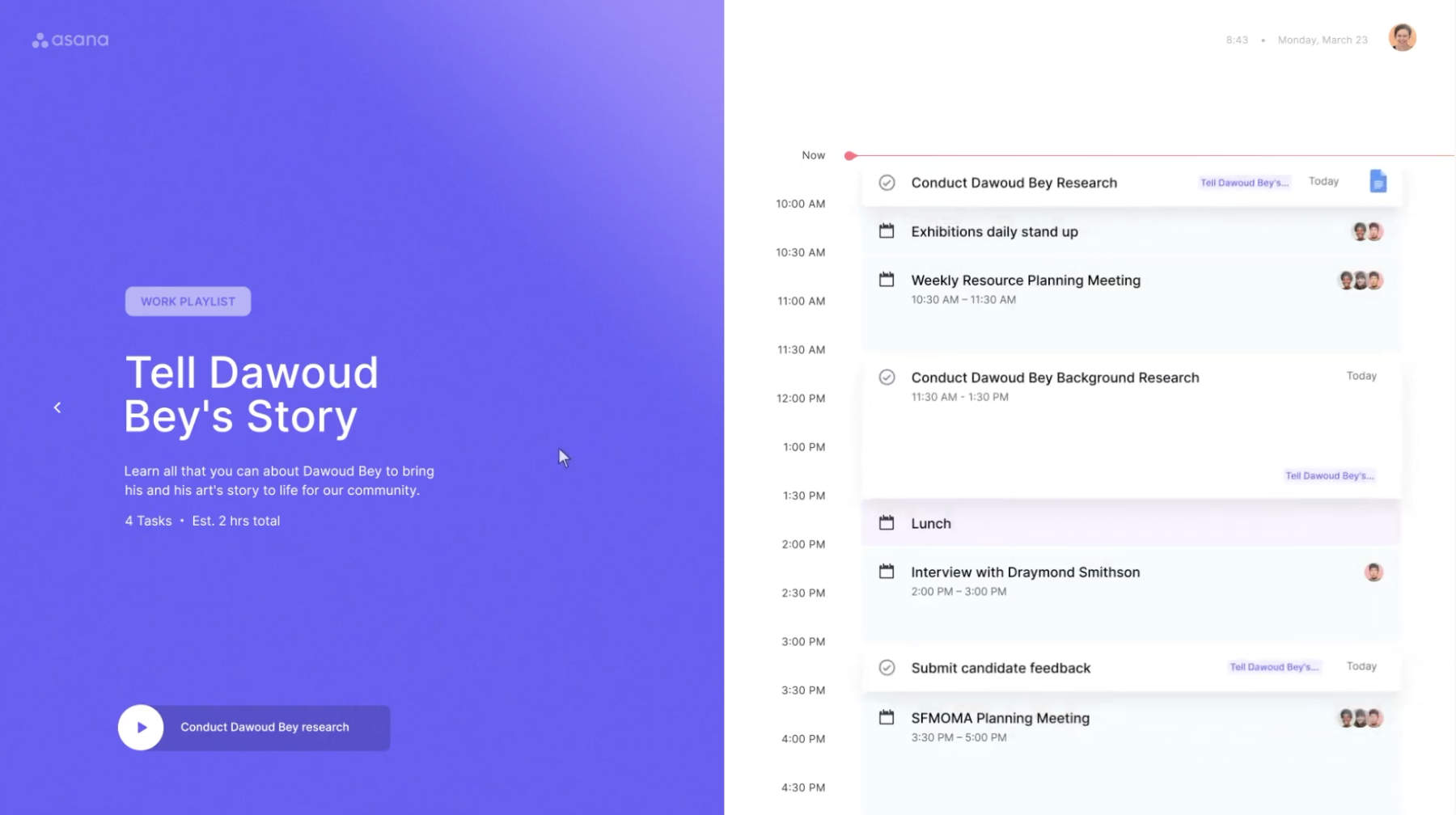
Analysis
A calendar and to-do list in harmony! ? Who can argue with that? There is definitely a need in this area, and there are a number of new tools known as “auto-schedulers” (such as Skedpal) that attempt this. Unfortunately, they don’t solve the problem yet. It’s a very complicated endeavor. Again, we’re not holding our breath for an algorithm that does this perfectly, but even a tool that helps you do better schedule your tasks manually would be an incredible accomplishment.
“Focus Mode” for notifications
A new focus mode allows you to filter your notifications so you only receive “pertinent and important messages only.”
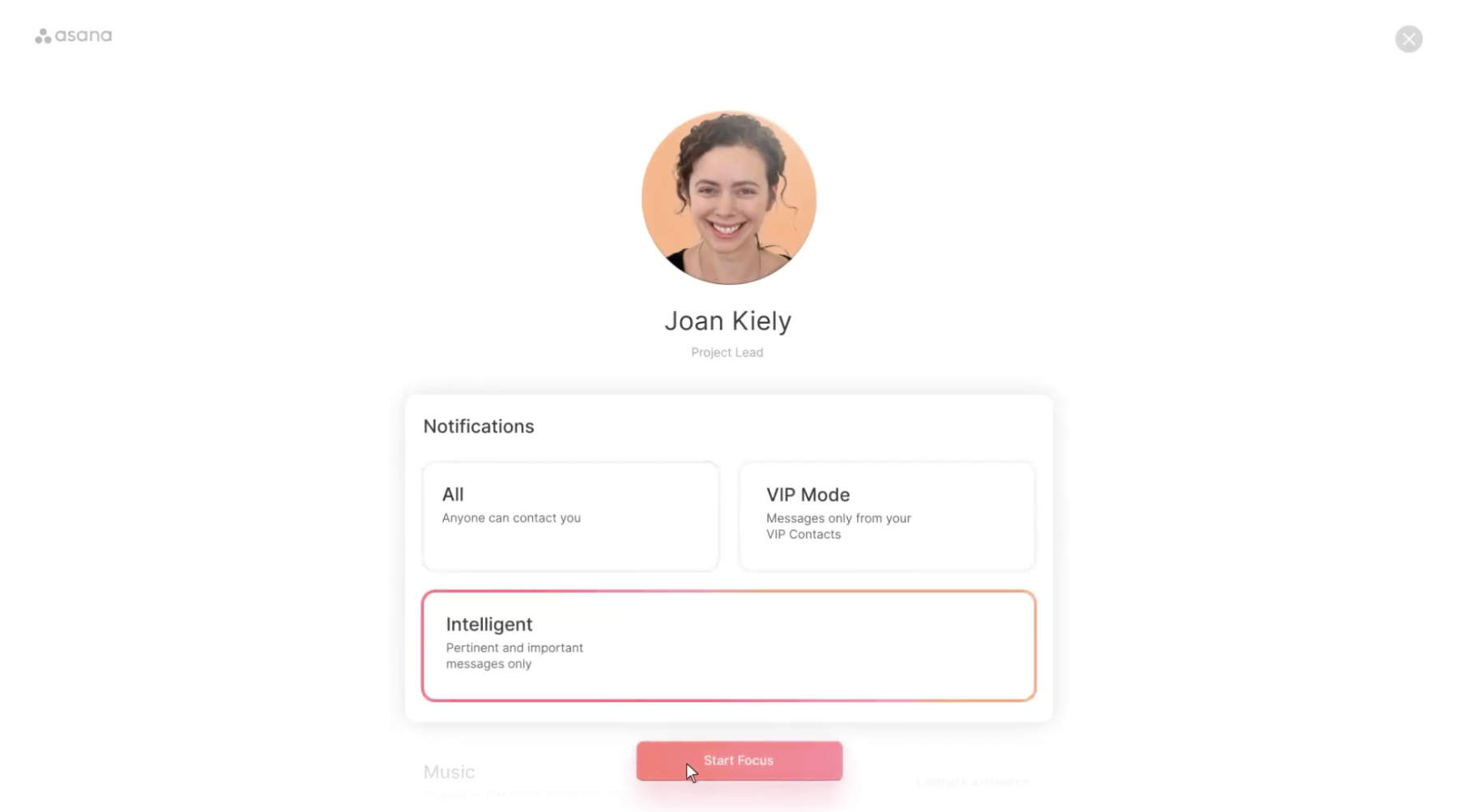
Analysis
Asana includes several helpful filters in the Inbox currently. This new Focus Mode sounds like a more elegant way of saying, “Only show me notifications regarding tasks in the ‘Today’ area of My Tasks.”
A more “Airtable”-like List view
Asana quietly snuck in a List view that looked more like Airtable
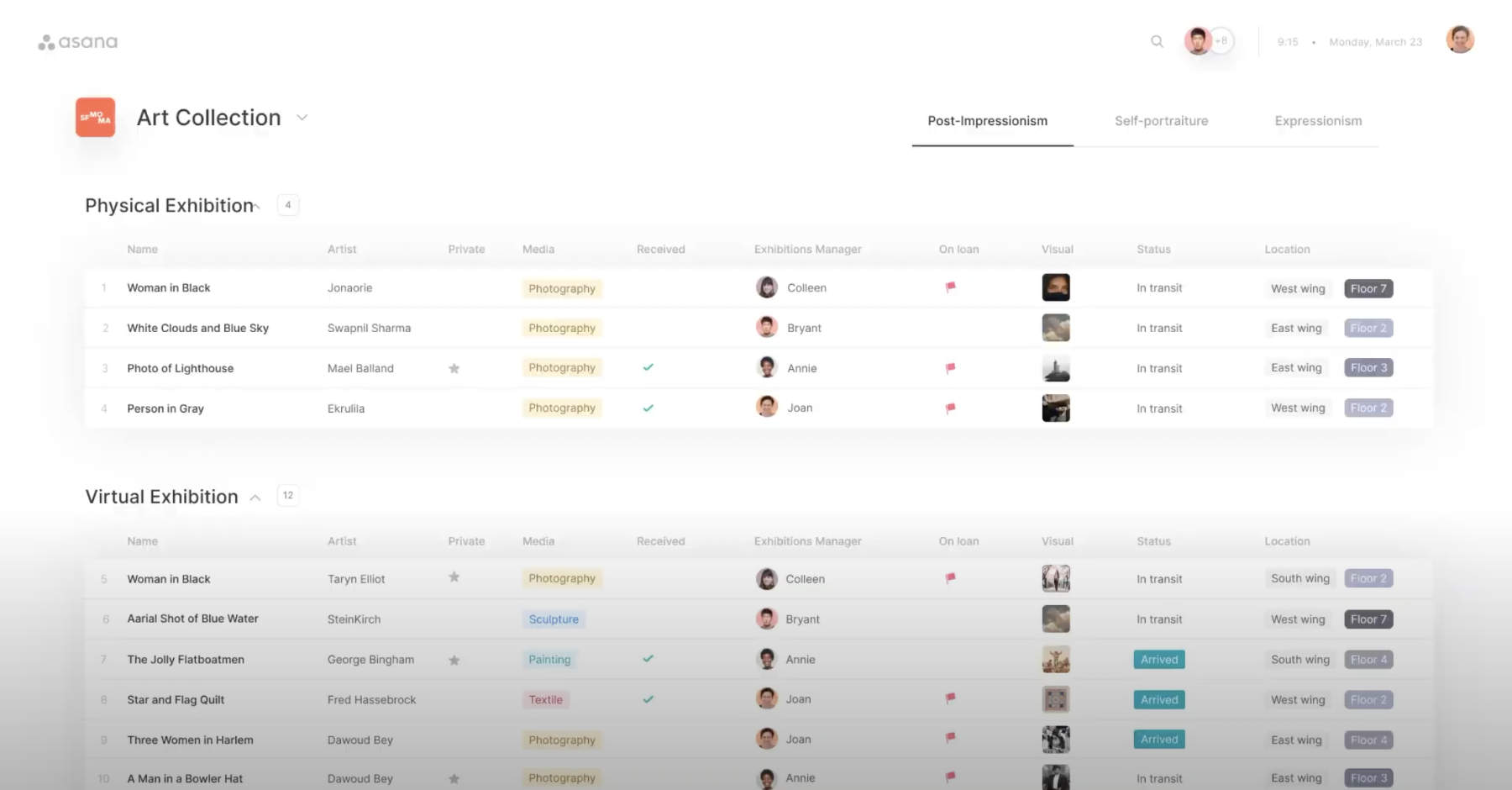
Analysis
This was one of our predictions for the event. Ever since Airtable’s meteroic rise as a tech unicorn, it seemed like Asana pivoted their list view to be more “spreadsheet” like. Airtable has the ability to show icons and add images like we saw in the presentation. But even the tag-like formatting looks shockingly like Airtable’s. Asana has gone hard after Trello’s customers in the past, and we expect the same for Airtable/Smartsheet in the future.
“Highlights” to get caught up quickly
“Highlights shows her what she’s missed and makes intelligent suggestions of how she can get caught up.”
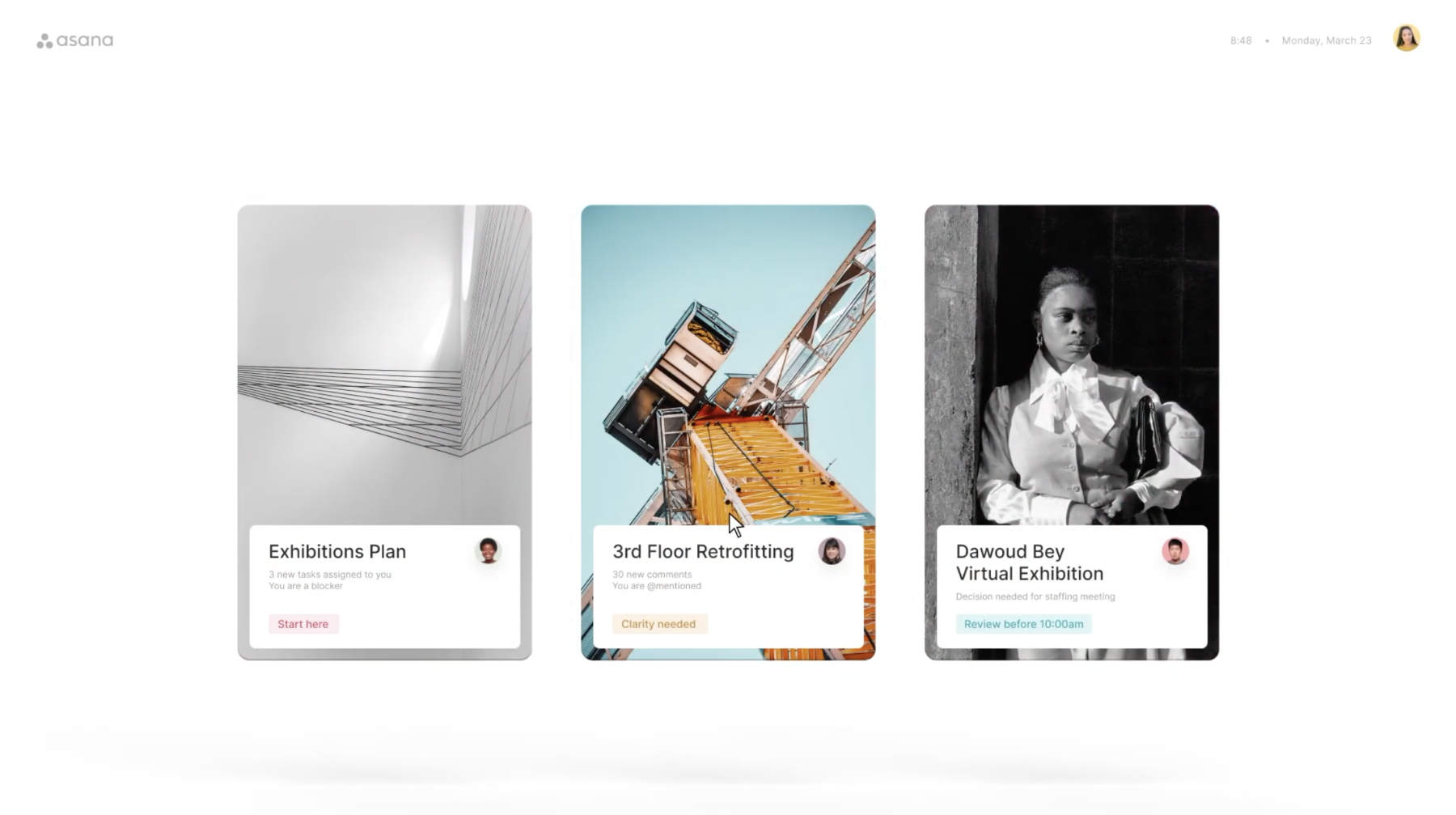
Analysis
This seems reasonable that there could be some intelligent grouping of notifications based on project or dependency status. This will simply be a matter of priority for Asana as there is nothing stopping them from doing this now.
Video updates & meetings
Asana demoed the ability to add video comments, as well as automatically parsing out spoken to-dos that automatically get assignees and due dates.
Analysis
Video comments sounds like a great addition and is probably overdue to be honest. But if trillion dollar Apple can’t make Siri more than a novelty most of the time, then I’m wagering Asana won’t automatically create tasks and give them assignees and due dates unobtrusively in the next 5 years.
Huddles: A new way to do meetings
“Huddles have specific agenda items, clear goals, and they only last as long as needed, and not a minute longer.”
“The assistant not only schedules the meeting, but also uses artificial intelligence to create a tailored agenda.”
“No one needs to take notes, because Asana automatically transcribes the entire conversation and converts action items into tasks.”
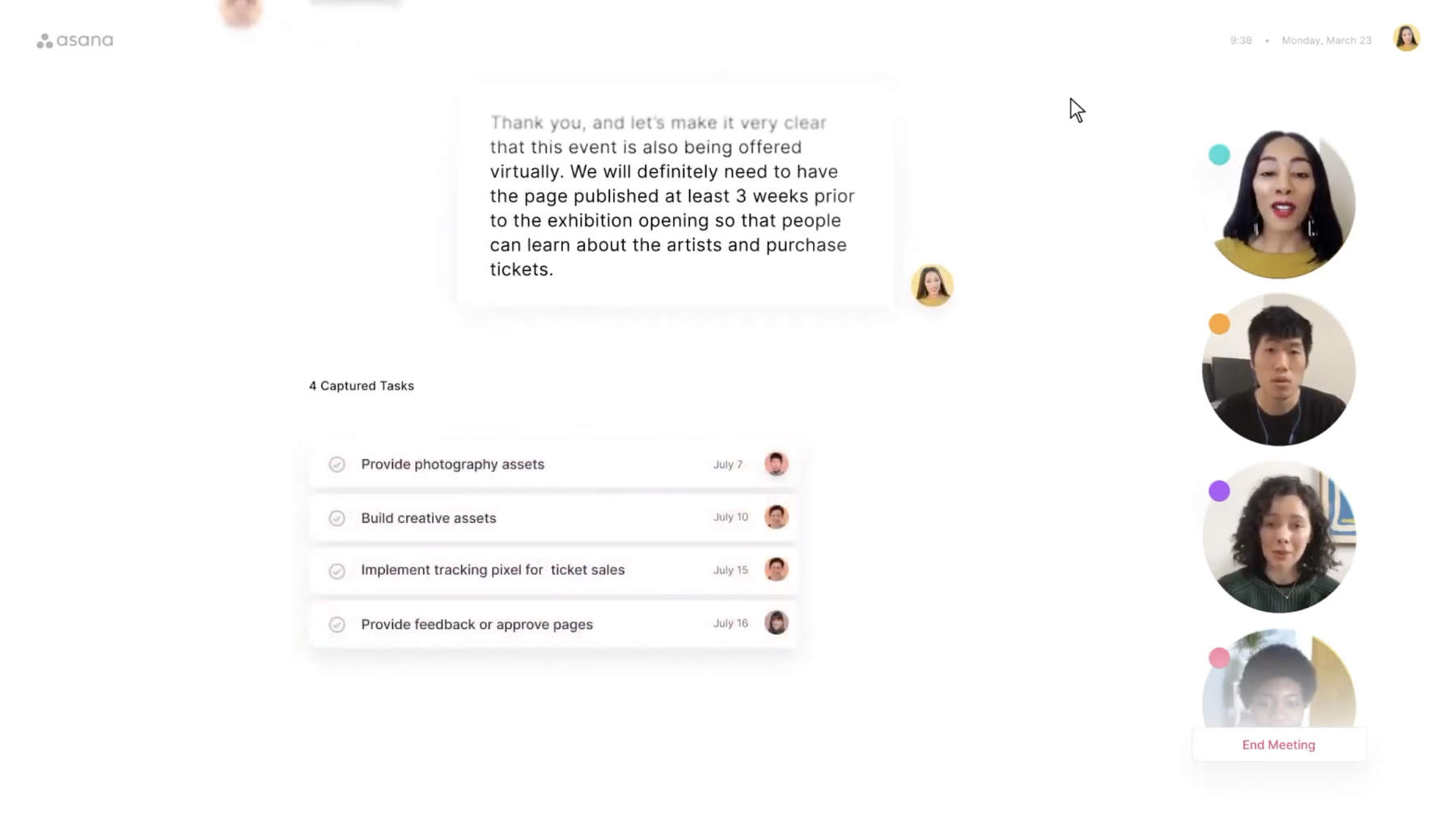
Analysis
Asana is a fantastic way to prepare meeting agendas, as we cover in our premium online course the Asana Training Masterclass. As a workplace app, meetings is a logical next step for Asana to assist with. Automatic meeting transcriptions sounds doable for virtual meetings, but we’re still pretty skeptical about the automatic task creation.
I think this is the item we’re most looking forward to!
Workflows: A store for project templates
Asana is planning a Workflow Store “that will share best practice workflows from category leaders and 3rd-party developers.”
The idea is that your organization could borrow a playbook from another organization like Netflix on how to do a marketing launch.
“Once a member of the content team approves the content for the draft webpage in Asana, a real-time integration with WordPress triggers the draft page to publish, and a Salesforce integration is activated to send out an email…”
“The Asana hub intelligently automates workflows across all of [an organization’s] tools. This creates true end-to-end automated workflows that the entire team can track, regardless of department or location.”
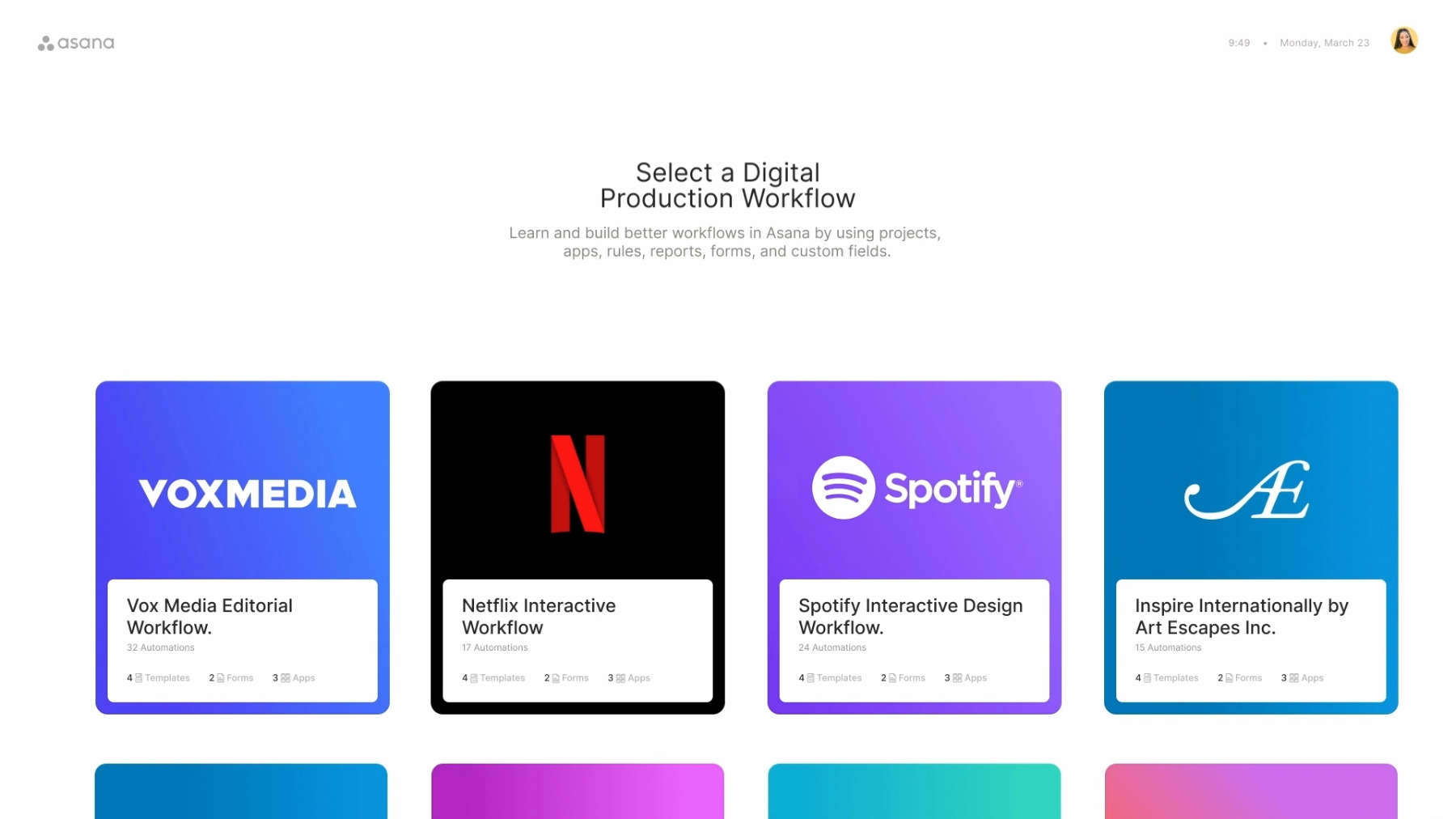
Analysis
Asana has long needed an easier way to share project templates with others, and their vision is a store like the Apple App Store. It’s unclear who will be allowed to upload templates to the Workflow Store, if you can charge money, and what percentage Asana will take. In addition to a series of Project templates, it appears a “Workflow” will also contain Forms and Apps (i.e. integrations).
This looks like a case where Asana saw a good idea from a developer who created Templana and decided to take over. They made a similar move with Instagantt, which provided Gantt charts for Asana before the Timeline feature existed.
Asana is again touting its vision to integrate with more tools, indicating upcoming connections with WordPress, Salesforce, and Stripe.
This is a great idea, and we’re excited to hear more details in the future.
Better resource capacity planning
The presentation highlighted 3 things that would improve resource planning:
- Intelligent suggestions for resource issues (Add Resources, Adjust Time, or Redistribute)
- Team-wide capacity dashboard
- Organization-wide capacity dashboard
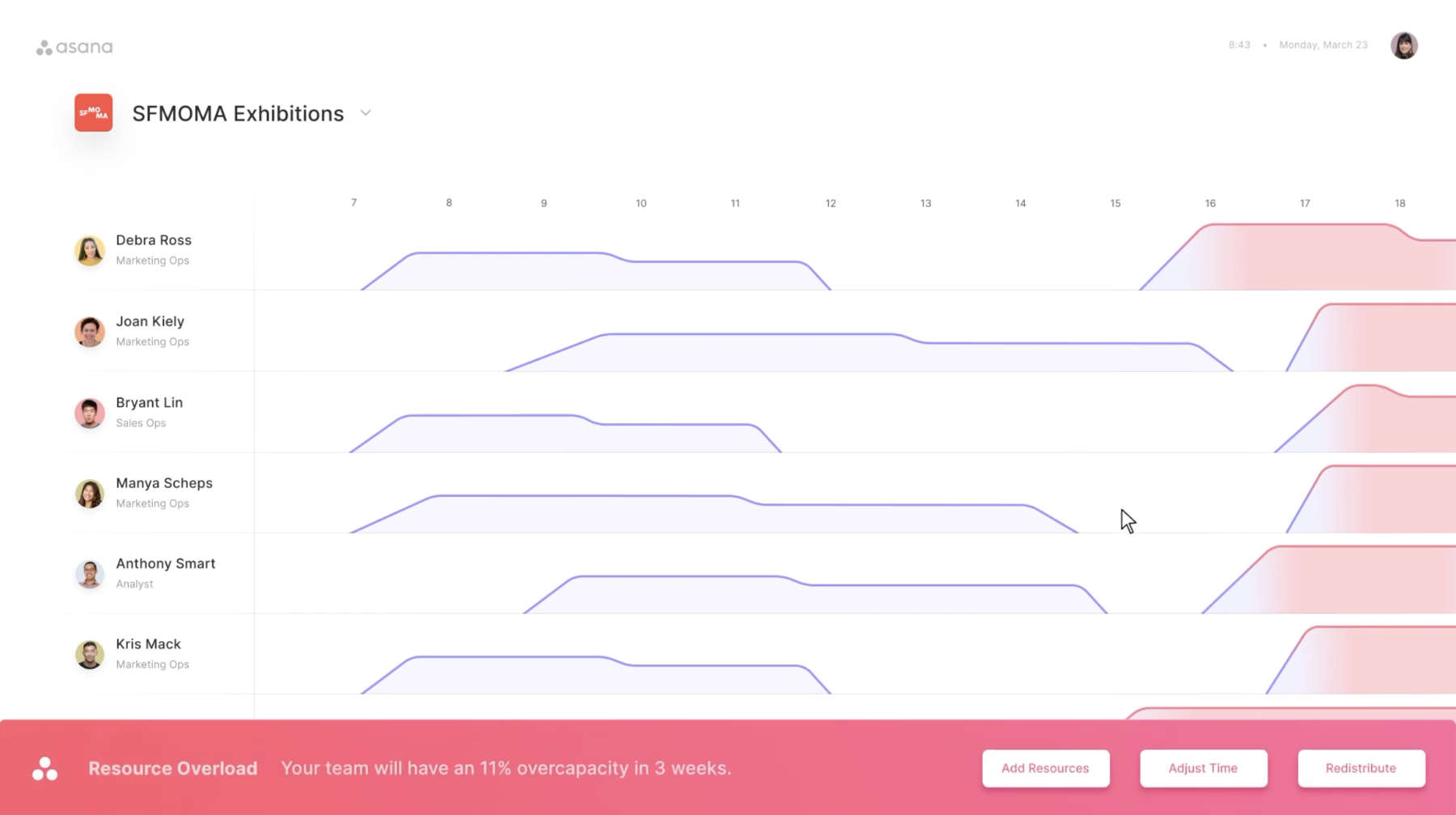
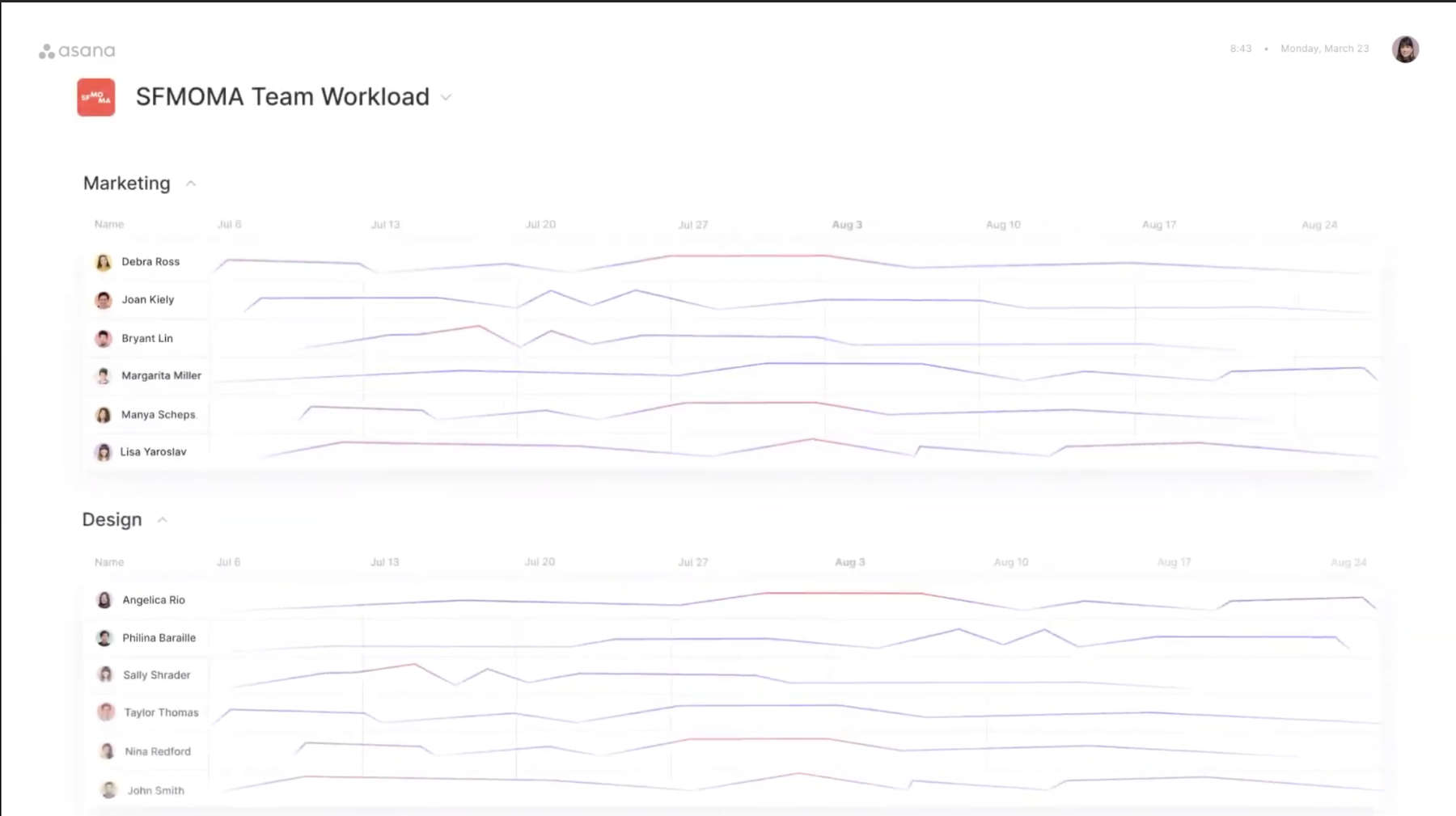
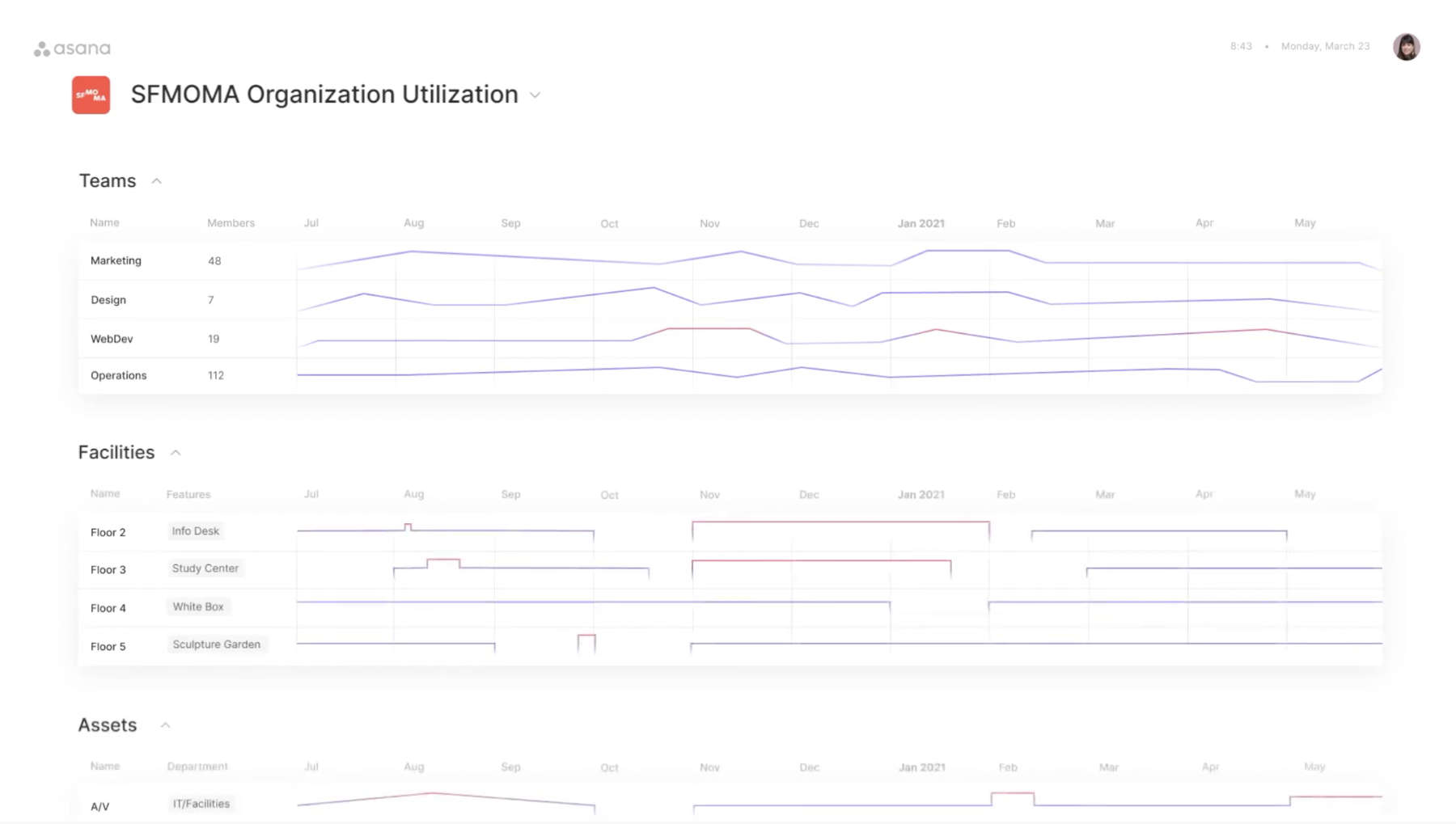
Analysis
Asana’s Portfolios need significant work. Unfortunately, their poor design has really affected the benefit of Asana’s Workload view which is tied into the Portfolios.
The ideas presented seem to address some of the existing issues, especially tying Workload to Teams and the Organization rather than to Portfolios. We definitely hope Asana, Inc. can implement some of these ideas because the current situation is really a disservice to their Business-tier customers.
Other future plans
Several other highlights included:
- Recommended attachments or links when commenting
- Take a picture of a whiteboard and turn the words into tasks
- A built-in management dashboard for every employee
So what do you think?
Asana, Inc. did a nice job of conveying some of their ideas and vision for the future. Having studied their moves over the last 7 years, we’re cautious about their ability to execute but optimistic they can continue to make work more enjoyable for everyone.
Let us know what you think in the comments! Anything you’re excited for?




